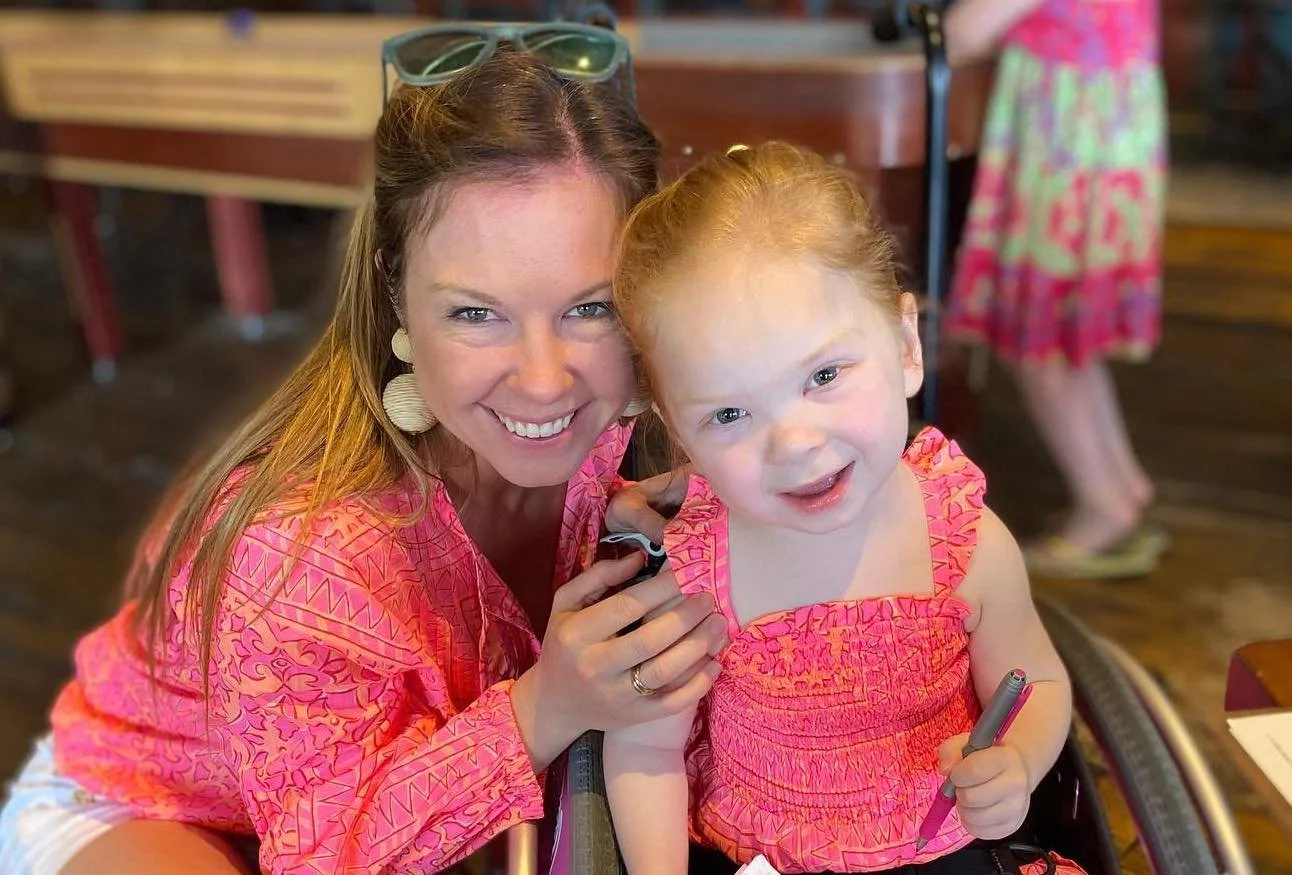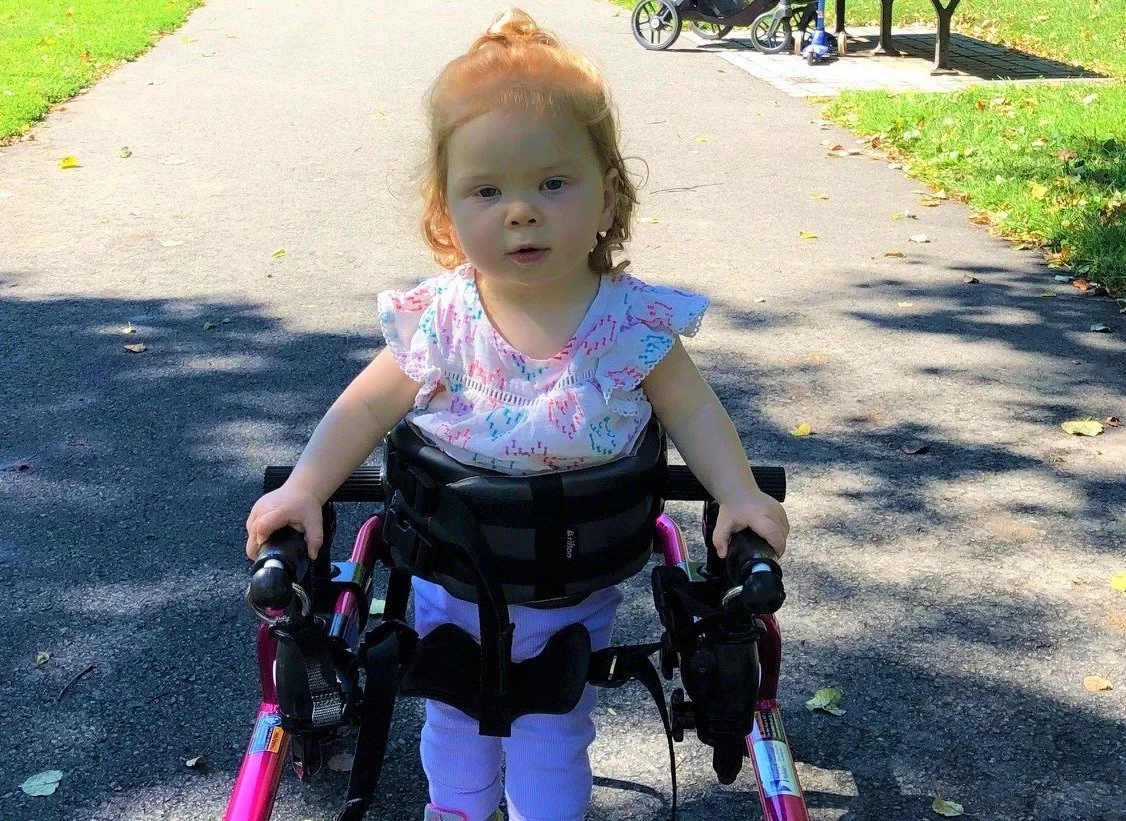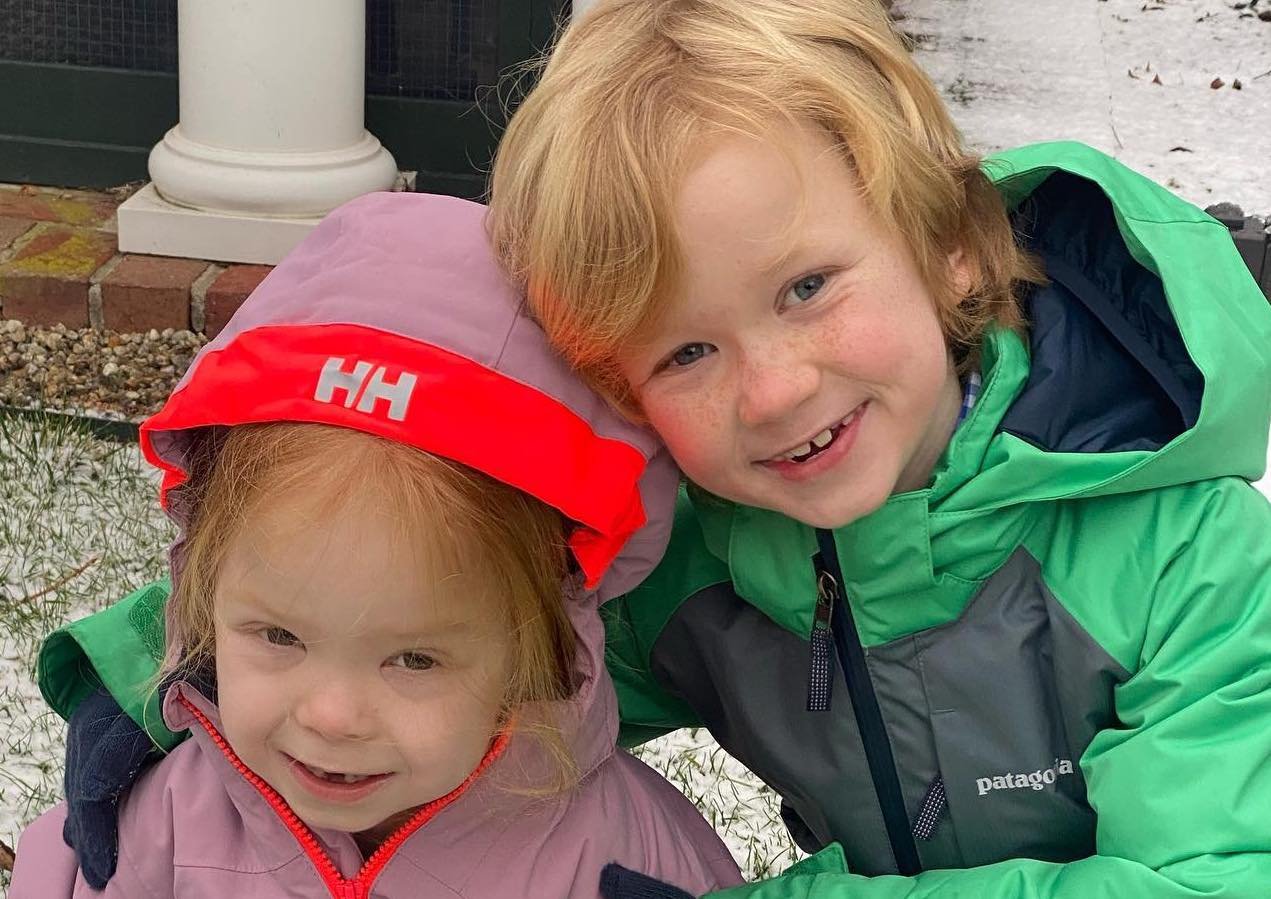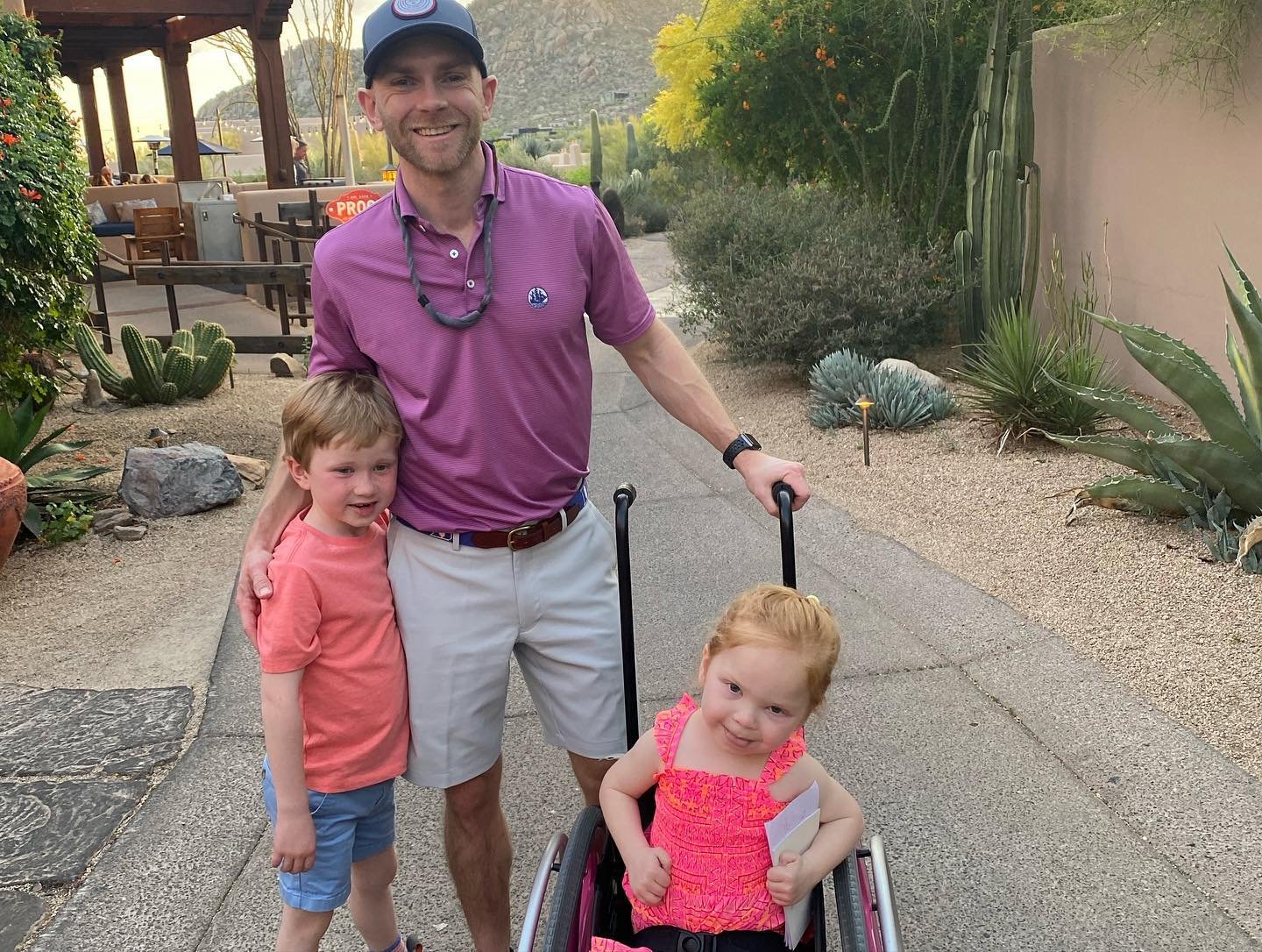Avery's Remarkable Rare Path: A One-in-a-Million Diagnostic Journey
Caitlin Eppes shares the inspiring story of The Avery Project, an initiative named after her daughter and dedicated to research of her rare genetic variant.
In August 2017, Caitlin Eppes and her husband, Trey, welcomed their second child, Avery. Shortly afterward, what initially seemed like harmless birthmarks on Avery’s skin became the first indicators of a complex medical journey. Following an initial diagnosis of a port wine stain, Avery's symptoms prompted genetic testing. What was ultimately revealed was an exceedingly rare variant that left her family in a realm of uncertainty, until a fortuitous meeting with a neurologist changed the course of their future. What the Eppes family never expected was a one-in-a-million breakthrough: finding another child with the same extremely rare variant—also, incredibly, named Avery. Their path, defined by persistence, resilience, and a small yet incredibly valuable team of specialists and other ultra-rare patients, gave rise to The Avery Project—a symbol of hope and a catalyst for pioneering research into rare diseases. Avery’s mother Caitlin Eppes spoke to Know Rare about the remarkable twists and turns of Avery’s diagnostic story, and the incredible odds that they managed to defy to lead them to a breakthrough in her case.
Know Rare: How did Avery’s diagnostic journey begin?
Caitlin: Avery was born August 18th, 2017. She's my second child—her brother Charlie is eight and a half years old. My pregnancy with Avery was pretty uneventful, but after she was born, she had what I thought were stork bites: right on the front of her forehead, on her left eye, on the back of her head, and on the nape of her neck. I didn't really think anything of it at the time—Charlie had some of those when he was born, too. But during our two-week well visit, her pediatrician said, “I think these are getting darker—I want you to go see a dermatologist.” She knew me well, and she said, “I'm not going to explain why just yet. I want to see what their thoughts are without you getting too nervous.”
The dermatologist ended up diagnosing her with a port wine stain. In some other patients those appear on one half of the face, but Avery’s was what they called a center line vascular anomaly. After about a month of going down this diagnosis path, I was like, “What's happening? Why are we going to so many specialists?” We ended up going to a neurologist at Boston Children's Hospital who specializes in diseases related to port wine stains. That neurologist believed she may have had a condition called macrocephaly capillary malformation, but said, “Her symptoms aren't fitting into the criteria that we look for.” As time went on, Avery was very floppy, very stiff, and we realized she was delayed. She never crawled, she never walked. She was able to sit up at about 12 months, but at 15 months, she lost that ability—she would spring backwards crying, almost like she was in pain.
At that point, everyone started paying attention. We were sent to geneticists who recommended whole exome testing. The results came back with one variant on a gene called SPTSSA. They told us that it was “a variant of uncertain significance.” It hadn’t been reported before—they didn’t have any other people on record who had it. There was no research on that variant, and there was minimal research on the gene itself. The geneticist left us with, “Wait five years—let's see if there's any new information that comes out, and we'll check back.”
KR: How did you feel at that point, in the face of so much uncertainty?
Caitlin: It was super scary and lonely. We'd been waiting for so long. I realized that many other families are not as lucky as we were, to even get an answer that quickly, but it still felt like a really long time for us. And to hear that she was the only one was just terrifying. I'd done enough research to start to understand this world of rare diseases. I realized that children are not always lucky enough to be able to wait five years. So that also terrified me—thinking, what if we don't find anything out before something happens to her? I started scouring Google Scholar—I’d be up at midnight with all these tabs open, researching related diseases to try to understand and to learn as much as I could.
I reached out to people via support groups, podcasts—anything I could think of—about how they got their gene research started. But it felt like they all already had communities for their specific diseases, and we didn't even know if her variant was the cause for her disease. So it felt like we were starting really far behind everyone else that I spoke to.
KR: What was the first breakthrough in learning more about Avery’s condition?
Caitlin: We were at a physiatry appointment to talk about the stiffness in her legs. The appointment was with a new physiatrist at Massachusetts General Hospital, and he happened to say, “I looked at her genetic results before this. There's a neurologist at MGH who has studied this metabolic pathway for a very long time. I think you should meet with him.”
He made the introduction to that neurologist, who was named Dr. Florian Eichler. By the time I walked into his office, he'd had his molecular geneticists model the variant in yeast which showed that the variant was causing Avery to overproduce Sphingolipids. That was the first time someone had been able to tell me that. We discussed how to obtain federal grants and he explained that we had to first generate insights and de-risk the effort a bit. So, it was clear that the research had to be privately funded to get enough insights in order to get the NIH comfortable with giving a federal grant, especially since there was only one child with the variant. He told me that we needed mouse models, and that we were going to need a researcher's time. We settled on a plan that involved paying for the genetically-altered mice and one-third of a postdoctorate's time, with the goal of getting some initial insights into the genetics and scaling up from there.
One of the things that we decided was, let’s not wait to prove that the variant is the cause of the issue before we start trying to figure out a treatment. Let's try to do both at the same time. Our goals from the outset were: to prove that the variant is the cause of her issues, to develop alternatives for a treatment (we pursued gene therapy and genetic editing), to do them at the same time, and to just try to move forward as fast as we could. That was the beginning of The Avery Project.
KR: What was it like to be suddenly thrown into a position where you were having to understand all of this advanced scientific information?
Caitlin: I still struggle with it, honestly. For work, I used to do a lot of project management, so I would have to talk to teams and glean the requirements for different projects. You learn just enough to be able to ask the right questions, and understand what certain words mean to each of those teams. That helped in a scientific context as well. Plus, you learn everything better when it's relevant to your interests. Since it was related to Avery, it just clicked more easily. I recently took a genetics class through the Harvard Medical School extension program, which was super helpful. Things make a lot more sense when I read research now—I understand more elements. I plan on taking a gene therapy class so that when we successfully develop a gene therapy treatment I am able to really understand how it works, and the risks involved. I still can’t do any of the science, but now I can listen to the science and understand it more.
“Tell your story—repeat it, and don’t be afraid to ask the same question over and over and over again.”
KR: How did you find out about the other Avery?
Caitlin: We put Avery’s variant into a global database called Gene Matcher. It's used by physicians to find other physicians who are interested in the same gene or variant, and to be able to connect their research. We said we want to be matched with anyone who has a variant within the gene—it didn't need to be the same variant.
In June of 2020, I was at a little outdoor gathering with some friends. It started storming, so we ducked inside—when we came back out, there was a double rainbow. It was absolutely gorgeous. When I left, I looked at my phone and I had a call from Dr. Eichler, a call from one of the doctors at Boston Children's, and a call from Avery's geneticist. It was one of those moments where your heart just stops, because you're like, this is either great news or terrible news—and either one is nerve-wracking. I called back the next morning, and Dr. Eichler said, “We found another person with the same variant. Because of HIPAA, we can't give you their information. They have your information and we hope they call you.” So then we had to just wait for them to reach out. I remember him saying, “Nature's whispering to us.”
A few weeks later, I was putting the kids to bed and I got a voicemail from a number I didn’t know. When I listened to the message, a woman said “Hi, it's Corey. I heard from the Undiagnosed Disease Network that our daughter Avery has the same variant as your child.”
I was floored. And I knew that Corey knew very little about us, just like I knew very little about her. I frantically called her back and said, “I can't believe this, but our daughter’s also named Avery.” At that time, the other Avery was nine. They’d had a nine-year diagnosis journey, and done whole exome testing four times, which is why I also view this as a miracle—I think most families really only do it once. [During their diagnosis experience], the UDN had said, “this is a variant of uncertain significance. Usually we would ignore this, but there’s another child out there with the same variant and similar symptoms.”
We finally had a tiny community. We had already started The Avery Project, and it just so happened that the second child was also named Avery, which made it that much more powerful and amazing.
KR: What sort of research has the Avery Project been able to undertake?
Caitlin: Over the past three years since we got started, the team has gained an incredible understanding of the impact of the variant on gene function and symptomic implications. They’ve pursued gene editing and have been able to build vectors for gene therapy, and they were working on administering the vectors for the gene therapy into mice. Basically—and this is where my gene therapy class will come in handy—the perspective is that over-expressing properly functioning versions of the gene will override the bad-functioning gene, and bring Sphingolipid levels back to normal.
They also found a third person in 2021 who had a different variant in the same gene. Our doctors have collaborated with his, and as a result of the insights of the three patients and all of their work, they were able to publish the first paper on the variants in Brain journal—which is one of the top neurological journals— in January.
It's really exciting to be able to say that within four years that included a global pandemic, we were able to define the functional change in the gene, the associated symptoms, categorize the symptoms with a disease (complex hereditary spastic paraplegia), and publish the first manuscript on the genetic variant in a renowned medical journal—and not just a generalized paper, but one that’s actually about our child and what she's experiencing.
Now we can work on changing the designation of the variant changed from “variant of uncertain significance” to “pathogenic.” The team is working to submit the necessary data to make that happen. If it changes designation, then that’s also a chance for doctors with patients who might have this variant to be re-contacted and told that their patient has a change to their diagnosis.
Now that that article is out there, I've noticed that it's referenced in other research. I feel like it's an amazing springboard for the science related to this variant, whether or not that comes out of the Avery Project singularly. It makes you see that if you put your mind to it, you can get it done.
“My goal for Avery is just for her to live the happiest, most independent life she can, in the way that she wants.”
KR: Can you tell us about Avery?
Caitlin: Avery is six now. She has long red hair, which she loves. She uses a manual wheelchair and whips around in it when she wants to sing and dance—she's always doing twirls in our kitchen. She's obsessed with her older brother. And she loves school. She’s in kindergarten at the public school in our town, and her peers are incredible with her. They'll hold her hand while she rolls herself or they'll ask to push her, and they come over to our house and do each other's makeup. She has a hilarious but also sometimes very dark sense of humor. She loves all the Disney villains, and when she pretends that she’s a princess it ends with her being tied up by bad guys—she always kind of goes for the darker route! She's a riot.
In many ways she’s a very typical six-year-old girl. I think sometimes when I say, “I have a disabled child,” people don't expect her when she rolls up next to me. Whenever she sees other people in wheelchairs, she says, “They're in a wheelchair like me!” And she'll zip right up to them and say, “I like your wheelchair.” She's so proud of who she is. My goal is just for her to live the happiest, most independent life she can, in the way that she wants.
KR: She sounds like an incredible kid. Do you have any advice for other parents navigating the early stages of diagnosis for a rare disease?
Caitlin: I would say three things: 1) get genetic testing. 2) ask lots of questions. And 3) stay organized.
Related to testing, if it seems like there’s confusion related to the diagnosis and you haven't gotten to genetic testing, get that as fast as you can. Even if the results show no variants—that’s an answer too. And the science is changing every day, so you can learn more and more.
If there is a genetic component, I’d ask about whether there are any registries you should be joining. It’s also worthwhile asking if there are any research efforts related to symptoms that may be good to get involved in. There was about a year between when our first neurologist at Boston Children's entered Avery’s genetic variant into GeneMatcher and when her geneticist discussed it with us. So ask these questions of everyone—not just your geneticist. There are all sorts of initiatives out there and you never know where a great referral will come from.
There is so much happening in the rare disease space related to awareness and data collection and research. There are a lot of ways to educate yourself about symptoms, diseases, treatments, and therapies that enable you to ask more questions of your providers. Honestly, I find Instagram to be incredibly helpful—you can search hashtags related to symptoms or genes. I try to tag a lot of our stories with the name of our gene and related symptoms. One thing Massachusetts General Hospital told me when we started this was that parents in our situation are the most likely ones to be the first to reach out to other families, versus the doctors. Parents will often do loads of research. That's also why Know Rare exists.
Finally, I know it’s the last thing you want to do after emotionally draining appointments, but stay organized. Take notes, save appointment summaries and phone numbers, etc. You won’t remember everything. When we were on our diagnosis journey, I had a spreadsheet for every appointment with the key takeaways. I had a column where I would note if what I was hearing at that appointment matched with the commentary from other appointments. It helped me to be able to say, “OK, this contradicts with this,” or ”this aligns with that” — and it more easily highlighted areas of confusion or consensus. It was also extremely helpful to be able to bring that printed spreadsheet to a doctor’s appointment and say, “Here's what every other doctor said that you probably won’t gather from her massive chart. These are my key takeaways based on the conversations I’ve had and what I know.”
It's a lot more organization and advocacy then I realized, and I had to play catch-up in that regard. In the beginning, we were getting a lot of insights that I wasn't properly tracking. Excel is my comfort zone, so I found that keeping track that way made me feel comfortable and organized, and it just made the process a lot easier. More recently though, a rare disease dad launched an amazing website to assist with this that I use for Avery and my son Charlie called Mejo. That’s my go-to now, instead of Excel.
Organization of the information makes advocacy easier and as I’m sure every reader knows from many experiences sometimes, it’s just about persistence. It's really hard, even at such an amazing institution, to rely on doctors to know everything that other doctors, and institutions, are working on. So in short, I would just say tell your story—repeat it, and don't be afraid to ask the same question over and over and over again.
To find out more about The Avery Project and how to support it, visit TheAveryProject.com.
To learn more about genetic testing, visit Know Rare’s blog.







